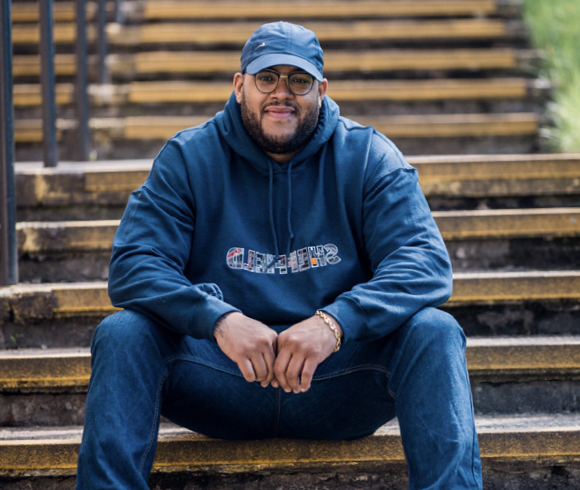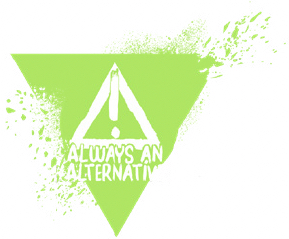
From a young age I could never understand why some people were dealt different hands in life; why couldn’t some people see? walk? talk? Why is that person sad? why are they angry? I genuinely felt upset for them, and I would almost feel guilty as they didn’t do anything to be like that.
It took me years to understand why I felt like that, but it left me with a life lesson. There are some things you cannot change, but there are plenty of things you can do to help.
Unfortunately, by the time I was of an age to help others, I found myself needing help. With nobody there I made myself a promise; once I figured out where I went wrong, I would prevent others from making the same mistakes as I did.
It took me 24 years but I did it, I took myself away from all the negative distractions. Started to attend college to get the grades I needed to go to university. Went on to Sheffield Hallam University, and during my placement year I started a security business, which made enough money to allow me to create the anti-knife crime campaign, Keep Sheffield Stainless.
It was called this due to the links that Sheffield has with stainless steel and it is the same material used to make knives. I chose to keep the campaign local because I was able to learn if the rise in knife crime was because of gang culture or, it was a problem amongst young people. Once I had a clear understanding on the magnitude of knife crime in Sheffield and the amount of young people getting involved. I created a workshop to deliver to young people in the hope that I could educate them around the dangers of knife crime. I took a while to perfect the delivery as I used a trial-and-error approach, that was heavily swayed on the input from the young people. This was because I knew that if the educational workshops were to be successful, it needed the voice input of young people.
I noticed that there wasn’t many places for people to dispose of their weapons anonymously and safely, this led me to design the UKs first portable weapon amnesty bin. The bins were adapted with wheels and large brackets on the back to easily move around. Before you ask! Of course they could get broken into, what cannot? What we did to mitigate that risk, was build a good relationships in the community and empty them regularly so there was not a big build-up of weapons. The next question is normally, do they work? In short, yes. We did some fund raising and we now have 8, which have allowed me to prevent over 500 weapons from reaching the streets. Including firearms and live ammunition.
As I engaged more young people in workshops, and talks, I noted that the knife was not the issue here. You could put any weapon in their hands and outcome would be the same. This led me to step back from knife crime and look at my work from a different angle.
Around this time, I was suffering with; flashbacks of knife crime attacks I was being sent via social media. I would avoid large knives, have mood swings, become irritable and have frequent emotional outbursts. It just wasn’t me; something wasn’t right. I’m full of joy, positive vibes and getting things done, but I felt like all of my energy had been taken away and I was being followed by a dark cloud.
After a long talk with a close friend, I realised that this because of the negative energy surrounding knife crime; people were going to prison, people were getting injured, people were dying, yet I felt I was the only one that was trying to prevent it. It was all having such a negative impact on my mental health. I later find out that I was suffering from Secondary trauma. This disorder is where you have the same symptoms of some that has seen a traumatic incident first hand, but you learn about the incident indirectly; conversation, a video, an audio recording or even an image.
Always an Alternative worn born from this conversation. A way for me to continue to engage with young people but focused less on the knife, which was the end result and more on the deep-rooted issues by challenging their mindset around serious violence, gang culture and antisocial behaviour.
Over the years I had collected over 300 weapons, both through face-to-face collections and weapons amnesty bins. I wanted to try and change the way that people viewed knife crime by taking these things that tear families apart and create something beautiful and motivational. So, I asked Jason Heppenstall, a well-known metal sculpture to create a tree with the weapons collected from the amnesty bins: named the tree of opportunity. To celebrate this, I held an exhibition along with art work from local artists and letters and poems from those who were unfortunate enough to feel the wrath of knife crime first hand. The exhibition was brilliant, it gained a lot of attention. Unfortunately, there was not much engagement from young people, which was quite upsetting.
After asking some of the young people that I worked with the reason for this. It was clear that they did not feel comfortable leaving their areas where they felt safe. So, a different way of thinking was required; A portable version of the exhibition! To travel around schools, colleges etc. The exhibition was awarded funding to make 6 visits to educational facilities in Sheffield. Part of the exhibition was me going in to do a talk on the exhibition and the dangers of knife crime. Additionally, we had a local acting teacher go in and do role play on difficult conversations with friends, in this case it was carrying a knife but the skills that the students developed would allow them to have this discussion with their friends around any delicate topic.
Due to the success of the youth tour, we were funded to visit 10 further educational facilities. The project in total gave access to over 45,000 people including staff. I spoke to over 3,000 students, but most importantly the youth tour created positive conversations around knife crime that allowed students to feel comfortable talking to the staff about the topic.
Even though education is my way of trying to get thorough to young people, I like to find alternative ways to engage them. This could be with arts, with the exhibition, performing arts as with the youth tour, I will try anything to try and get through to that one young person that needs support.
Out last project, Victims Voices was formed to allow people to see the devastation that knife crime causes through the words of families and friends of victims. The reasoning behind this project was because we often feel a disconnect between knife crime and people and hear a lot of “it won’t happen to me” attitude.
The focal point of the project was a documentary, where family members and friends were interviewed. Recording these conversations was really heart breaking, I have never been so emotionally exhausted during any other project. However, I believe that the documentary truly brings to light, the pain that people go through, and that, in fact, anyone can be affected by knife crime.
We indent to do 5 more episodes of the series, one more around the victims’ families and friends; one focussing on victims that have survived a knife attack; one focussing on the perpetrators; one focussing on the perpetrators families and finally, the last episode will look into at what people are doing to prevent knife crime on our streets and plans from the police, health and the government; how they intend to get it under control.

Anthony Olaseinde
CEO, Always an Alternative

www.alwaysanalternative.org.uk
Always An Alternative CIO Charity No.1201213
🏆 2022 40 x 40 Future Leader
www.blackculturalarchives.org
🏆 2022 Points of Light Award Winner:
www.pointsoflight.gov.uk/always-an-alternative/
🏆 2021 Positive Role Model Award (age )Winner
www.nationaldiversityawards.co.uk/2021-winners/
🏆 2019 Let's Make a Difference Award Winner
www.letsmakeadifferenceawards.co.uk/nominee/anthony-olaseinde/
🌐 www.alwaysanalternative.org.uk